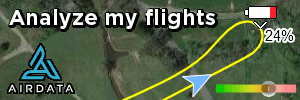The whole thing smells the deeper I get into it.
It does have an odor for sure.
Most commercial ops are happy to support a Remote ID system. The purpose of a Remote ID system would be for those needing to know (LLE) to be able to quickly and easily identify any uas operating at a given location; In real time. The system that would provide that identification is already incorporated into many (most ?) commercial grade / prosumer UAVs. As the FAA mentions, it could probably quite easily and without much cost, be put into use. It would basically consist of a short data stream consisting of the identity and location of the uas and the control station being broadcast along with the control signal which anyone with the proper receiver could receive.
But what the FAA wants to do in the NPRM goes far beyond this. They want every single uas to connect to the internet anytime it goes airborne and stream it's data to a server somewhere where it can be stored in case anyone wants to look it up someday in addition to it being available in real time like the simple radio wave version.
The FAA figured out that this server based system, which they call "Remote ID UAS Service Supplier" or (Remote ID USS) will cost a lot of money to set up and administer, so they want private entities to step up and build it and charge users in order to pay for it. The FAA crunched the #s and came up with $ 2.50 per month that the service should cost users. This doesn't cover the sim and data connection for every UAV, however.
Remember, the reason the FAA states as the need for a remote ID system is to find bad actors. The examples they give are near wildfires and airports. This could easily be accomplished with the simple version of Remote ID (RID) that I think we all had envisioned. But, the FAA thinks, I guess, that it would be much easier (and extremely more complex and expensive) if in addition to a live radio broadcast, the LLE can sit in their office and log into the Remote ID USS to see who the bad actor might be. If there is a bad actor flying where they shouldn't, I guess the LLE will have to actually go out to the scene unless they plan to just email a citation?
The FAA is going to require that UAS that are equipped with this new Remote ID system be difficult to modify in order to discourage bad actors from using these craft while defeating the ID system. Really? If a bad actor wanted to fly where they shouldn't, why wouldn't they just use one of the 10's or 100's of thousands of units that will not have that system. Let alone the fact that almost nothing is un-hackable.
Back to that internet connection. The FAA wants the bird to not be able to take off if there is an internet connection that the operator is not using. You mean like the craft will know if your phone is in Airplane mode? Or, you put a aluminium dome over the craft that has it's own data connection? If there is no internet connection, then the craft will still be able to take off, presumably, if it live broadcasts the data. You know, that simple solutions we were anticipating. So, why do we need the complex and expensive server system again? The one that goes far, far beyond what even manned aviation uses?
I could go on because there is a Buuuunnnnncccchh of overthinking presented in the NPRM. But I suspect everyone is seeing it for themselves.
Fellas. I think we are in the "good ol' days" of UAS ops in the US. For how long is the question.



